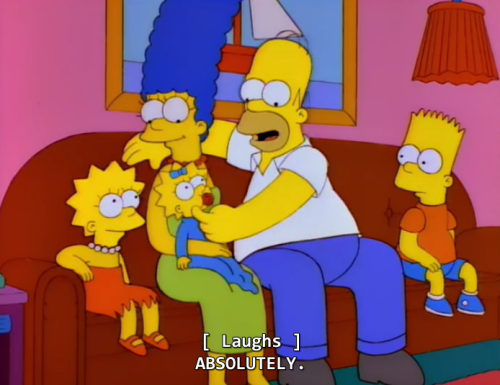Smparticle2 - Untitled




More Posts from Smparticle2 and Others


Shortly after he finished filming on the opulent set of Baz Luhrmann’s ‘The Great Gatsby,’ Joel headed off to the Jordanian desert to begin training for 'Zero Dark Thirty.' With a heavy dose of mock horror, he said that it was quite a shock to his delicate system:
“An experience like ‘Gatsby’ really spoils you because you are treated like a king. You’re given a big trailer, someone brings fresh flowers to your trailer, there are dates and walnuts and coconut water in your fridge … really living large.“
Then, when he suddenly found himself roughing it in the torrid desert, “sharing a cubicle with five other guys, half of them military, and carrying 50-60 kilos of equipment … It was like, 'Baz! Come and save me!’ You get a reality check."







How we determine who’s to blame
How do people assign a cause to events they witness? Some philosophers have suggested that people determine responsibility for a particular outcome by imagining what would have happened if a suspected cause had not intervened.
This kind of reasoning, known as counterfactual simulation, is believed to occur in many situations. For example, soccer referees deciding whether a player should be credited with an “own goal” — a goal accidentally scored for the opposing team — must try to determine what would have happened had the player not touched the ball.
This process can be conscious, as in the soccer example, or unconscious, so that we are not even aware we are doing it. Using technology that tracks eye movements, cognitive scientists at MIT have now obtained the first direct evidence that people unconsciously use counterfactual simulation to imagine how a situation could have played out differently.
“This is the first time that we or anybody have been able to see those simulations happening online, to count how many a person is making, and show the correlation between those simulations and their judgments,” says Josh Tenenbaum, a professor in MIT’s Department of Brain and Cognitive Sciences, a member of MIT’s Computer Science and Artificial Intelligence Laboratory, and the senior author of the new study.
Tobias Gerstenberg, a postdoc at MIT who will be joining Stanford’s Psychology Department as an assistant professor next year, is the lead author of the paper, which appears in the Oct. 17 issue of Psychological Science. Other authors of the paper are MIT postdoc Matthew Peterson, Stanford University Associate Professor Noah Goodman, and University College London Professor David Lagnado.
Follow the ball
Until now, studies of counterfactual simulation could only use reports from people describing how they made judgments about responsibility, which offered only indirect evidence of how their minds were working.
Gerstenberg, Tenenbaum, and their colleagues set out to find more direct evidence by tracking people’s eye movements as they watched two billiard balls collide. The researchers created 18 videos showing different possible outcomes of the collisions. In some cases, the collision knocked one of the balls through a gate; in others, it prevented the ball from doing so.
Before watching the videos, some participants were told that they would be asked to rate how strongly they agreed with statements related to ball A’s effect on ball B, such as, “Ball A caused ball B to go through the gate.” Other participants were asked simply what the outcome of the collision was.
As the subjects watched the videos, the researchers were able to track their eye movements using an infrared light that reflects off the pupil and reveals where the eye is looking. This allowed the researchers, for the first time, to gain a window into how the mind imagines possible outcomes that did not occur.
“What’s really cool about eye tracking is it lets you see things that you’re not consciously aware of,” Tenenbaum says. “When psychologists and philosophers have proposed the idea of counterfactual simulation, they haven’t necessarily meant that you do this consciously. It’s something going on behind the surface, and eye tracking is able to reveal that.”
The researchers found that when participants were asked questions about ball A’s effect on the path of ball B, their eyes followed the course that ball B would have taken had ball A not interfered. Furthermore, the more uncertainty there was as to whether ball A had an effect on the outcome, the more often participants looked toward ball B’s imaginary trajectory.
“It’s in the close cases where you see the most counterfactual looks. They’re using those looks to resolve the uncertainty,” Tenenbaum says.
Participants who were asked only what the actual outcome had been did not perform the same eye movements along ball B’s alternative pathway.
“The idea that causality is based on counterfactual thinking is an idea that has been around for a long time, but direct evidence is largely lacking,” says Phillip Wolff, an associate professor of psychology at Emory University, who was not involved in the research. “This study offers more direct evidence for that view.”

(Image caption: In this video, two participants’ eye-movements are tracked while they watch a video clip. The blue dot indicates where each participant is looking on the screen. The participant on the left was asked to judge whether they thought that ball B went through the middle of the gate. Participants asked this question mostly looked at the balls and tried to predict where ball B would go. The participant on the right was asked to judge whether ball A caused ball B to go through the gate. Participants asked this question tried to simulate where ball B would have gone if ball A hadn’t been present in the scene. Credit: Tobias Gerstenberg)
How people think
The researchers are now using this approach to study more complex situations in which people use counterfactual simulation to make judgments of causality.
“We think this process of counterfactual simulation is really pervasive,” Gerstenberg says. “In many cases it may not be supported by eye movements, because there are many kinds of abstract counterfactual thinking that we just do in our mind. But the billiard-ball collisions lead to a particular kind of counterfactual simulation where we can see it.”
One example the researchers are studying is the following: Imagine ball C is headed for the gate, while balls A and B each head toward C. Either one could knock C off course, but A gets there first. Is B off the hook, or should it still bear some responsibility for the outcome?
“Part of what we are trying to do with this work is get a little bit more clarity on how people deal with these complex cases. In an ideal world, the work we’re doing can inform the notions of causality that are used in the law,” Gerstenberg says. “There is quite a bit of interaction between computer science, psychology, and legal science. We’re all in the same game of trying to understand how people think about causation.”









Tuz Gölü - Cereal / WORDS & PHOTOS: Peter Edel
FOR THE AMERICAN COLOUR FIELD PAINTER BARNETT NEWMAN, THE EMPTY, BOUNDLESS LANDSCAPE ENHANCED AN INDIVIDUAL’S SENSE OF PRESENCE WITHIN THEM. THE TUZ GÖLÜ, THE SALT LAKE LOCATED IN THE CORE OF TURKEY’S ANATOLIAN PENINSULA, IS ONE OF THE PLACES IN THE WORLD WHERE THIS UNDERSTANDING IS EXPERIENCED MOST PROFOUNDLY.
There is a time when it is necessary to abandon the used clothes, which already have the shape of our body and to forget our paths, which takes us always to the same places. This is the time to cross the river: and if we don’t dare to do it, we will have stayed, forever beneath ourselves
Fernando Pessoa (via paizleyrayz)
The Beauty of Webb Telescope’s Mirrors
The James Webb Space Telescope’s gold-plated, beryllium mirrors are beautiful feats of engineering. From the 18 hexagonal primary mirror segments, to the perfectly circular secondary mirror, and even the slightly trapezoidal tertiary mirror and the intricate fine-steering mirror, each reflector went through a rigorous refinement process before it was ready to mount on the telescope. This flawless formation process was critical for Webb, which will use the mirrors to peer far back in time to capture the light from the first stars and galaxies.

The James Webb Space Telescope, or Webb, is our upcoming infrared space observatory, which will launch in 2019. It will spy the first luminous objects that formed in the universe and shed light on how galaxies evolve, how stars and planetary systems are born, and how life could form on other planets.
A polish and shine that would make your car jealous

All of the Webb telescope’s mirrors were polished to accuracies of approximately one millionth of an inch. The beryllium mirrors were polished at room temperature with slight imperfections, so as they change shape ever so slightly while cooling to their operating temperatures in space, they achieve their perfect shape for operations.

The Midas touch
Engineers used a process called vacuum vapor deposition to coat Webb’s mirrors with an ultra-thin layer of gold. Each mirror only required about 3 grams (about 0.11 ounces) of gold. It only took about a golf ball-sized amount of gold to paint the entire main mirror!

Before the deposition process began, engineers had to be absolutely sure the mirror surfaces were free from contaminants.

The engineers thoroughly wiped down each mirror, then checked it in low light conditions to ensure there was no residue on the surface.

Inside the vacuum deposition chamber, the tiny amount of gold is turned into a vapor and deposited to cover the entire surface of each mirror.

Primary, secondary, and tertiary mirrors, oh my!
Each of Webb’s primary mirror segments is hexagonally shaped. The entire 6.5-meter (21.3-foot) primary mirror is slightly curved (concave), so each approximately 1.3-meter (4.3-foot) piece has a slight curve to it.

Those curves repeat themselves among the segments, so there are only three different shapes — 6 of each type. In the image below, those different shapes are labeled as A, B, and C.

Webb’s perfectly circular secondary mirror captures light from the 18 primary mirror segments and relays those images to the telescope’s tertiary mirror.

The secondary mirror is convex, so the reflective surface bulges toward a light source. It looks much like a curved mirror that you see on the wall near the exit of a parking garage that lets motorists see around a corner.

Webb’s trapezoidal tertiary mirror captures light from the secondary mirror and relays it to the fine-steering mirror and science instruments. The tertiary mirror sits at the center of the telescope’s primary mirror. The tertiary mirror is the only fixed mirror in the system — all of the other mirrors align to it.

All of the mirrors working together will provide Webb with the most advanced infrared vision of any space observatory we’ve ever launched!
Who is the fairest of them all?
The beauty of Webb’s primary mirror was apparent as it rotated past a cleanroom observation window at our Goddard Space Flight Center in Greenbelt, Maryland. If you look closely in the reflection, you will see none other than James Webb Space Telescope senior project scientist and Nobel Laureate John Mather!

Learn more about the James Webb Space Telescope HERE, or follow the mission on Facebook, Twitter and Instagram.
Make sure to follow us on Tumblr for your regular dose of space: http://nasa.tumblr.com.




How to Beam ➝ Noemi Makra Style





You are the center of wonderland & Keep the last glow in mind by Jana Luo










Theatre time. All dancer have their own ways of getting ready for a show. I believe that a consistent routine is important to preparing for what’s ahead in a few hours. Because Forsythe’s “Artifact” is so hard on the body and I’m in every show, I tend to get to the theatre pretty early to make sure everything is ready, to put on some “normatec” boots (a compression boot for athletes that helps greatly with fatigue) and do hair and makeup. - Lia Cirio
Lia Cirio - Boston Opera House
Follow the Ballerina Project on Facebook, Instagram, YouTube, Twitter & Pinterest
For information on purchasing Ballerina Project limited edition prints.
-
 int-r-m liked this · 5 years ago
int-r-m liked this · 5 years ago -
 desgostava liked this · 6 years ago
desgostava liked this · 6 years ago -
 berlinthebrunette liked this · 6 years ago
berlinthebrunette liked this · 6 years ago -
 nahmesis liked this · 6 years ago
nahmesis liked this · 6 years ago -
 snottly liked this · 6 years ago
snottly liked this · 6 years ago -
 lauratraseylikepaccoons liked this · 6 years ago
lauratraseylikepaccoons liked this · 6 years ago -
 kur0iniji liked this · 6 years ago
kur0iniji liked this · 6 years ago -
 coolharddefendorcollectorpo-blog liked this · 6 years ago
coolharddefendorcollectorpo-blog liked this · 6 years ago -
 self-absorbed-pretty-boy liked this · 6 years ago
self-absorbed-pretty-boy liked this · 6 years ago -
 myetherealmeaning liked this · 6 years ago
myetherealmeaning liked this · 6 years ago -
 babemasi reblogged this · 6 years ago
babemasi reblogged this · 6 years ago -
 babemasi liked this · 6 years ago
babemasi liked this · 6 years ago -
 charactertherapy liked this · 6 years ago
charactertherapy liked this · 6 years ago -
 see1012 liked this · 6 years ago
see1012 liked this · 6 years ago -
 blue-mainb liked this · 6 years ago
blue-mainb liked this · 6 years ago -
 imaginations-creations21 liked this · 6 years ago
imaginations-creations21 liked this · 6 years ago -
 devinwolfi liked this · 6 years ago
devinwolfi liked this · 6 years ago -
 thesynysterunknown reblogged this · 6 years ago
thesynysterunknown reblogged this · 6 years ago -
 thesynysterunknown liked this · 6 years ago
thesynysterunknown liked this · 6 years ago -
 the-moon-queen liked this · 6 years ago
the-moon-queen liked this · 6 years ago -
 cloudbustingss liked this · 6 years ago
cloudbustingss liked this · 6 years ago -
 the-ace-of-wrath liked this · 6 years ago
the-ace-of-wrath liked this · 6 years ago -
 lavendertulip liked this · 6 years ago
lavendertulip liked this · 6 years ago -
 stupidadultfangirl liked this · 6 years ago
stupidadultfangirl liked this · 6 years ago -
 rene-lacroix liked this · 7 years ago
rene-lacroix liked this · 7 years ago -
 saintmourningstvr liked this · 7 years ago
saintmourningstvr liked this · 7 years ago -
 snapebatch liked this · 7 years ago
snapebatch liked this · 7 years ago -
 srrangenessss-blog liked this · 7 years ago
srrangenessss-blog liked this · 7 years ago -
 cxtwomans liked this · 7 years ago
cxtwomans liked this · 7 years ago -
 miziagi liked this · 7 years ago
miziagi liked this · 7 years ago -
 straight-outta-hobbiton liked this · 7 years ago
straight-outta-hobbiton liked this · 7 years ago -
 rainbowlemonxd liked this · 7 years ago
rainbowlemonxd liked this · 7 years ago -
 babinicz reblogged this · 7 years ago
babinicz reblogged this · 7 years ago -
 babinicz liked this · 7 years ago
babinicz liked this · 7 years ago -
 80s-pepsi liked this · 7 years ago
80s-pepsi liked this · 7 years ago -
 futurepastmemorylane liked this · 7 years ago
futurepastmemorylane liked this · 7 years ago -
 rosequtuwee liked this · 7 years ago
rosequtuwee liked this · 7 years ago -
 woundfist liked this · 7 years ago
woundfist liked this · 7 years ago -
 prettywildreckless liked this · 7 years ago
prettywildreckless liked this · 7 years ago -
 bitchystudentpenguin-blog liked this · 7 years ago
bitchystudentpenguin-blog liked this · 7 years ago -
 crawling-through-time liked this · 7 years ago
crawling-through-time liked this · 7 years ago -
 marcuskanebeard liked this · 7 years ago
marcuskanebeard liked this · 7 years ago